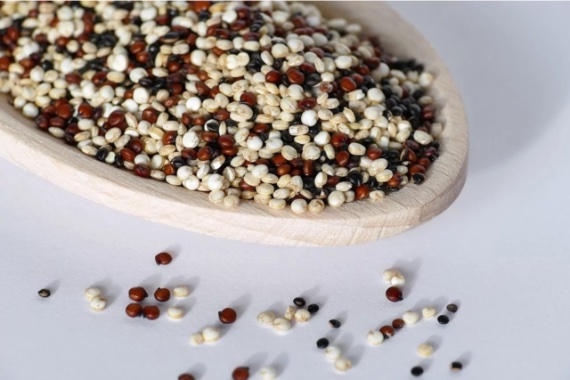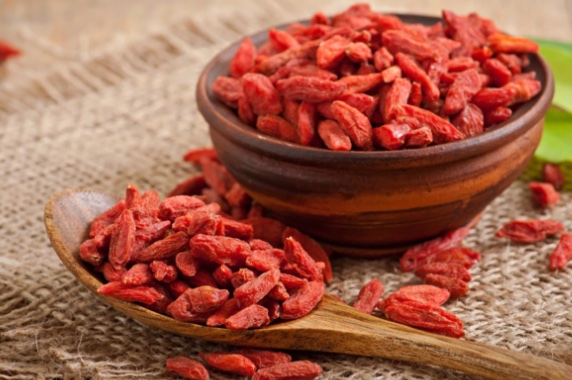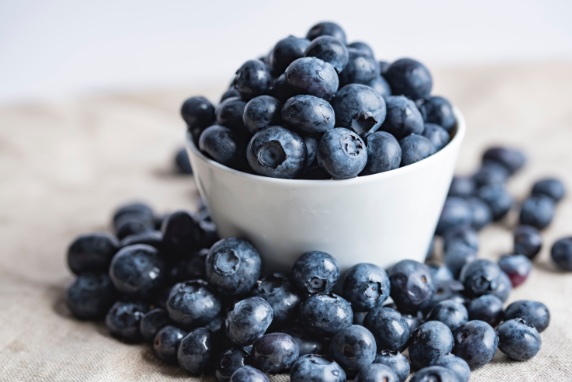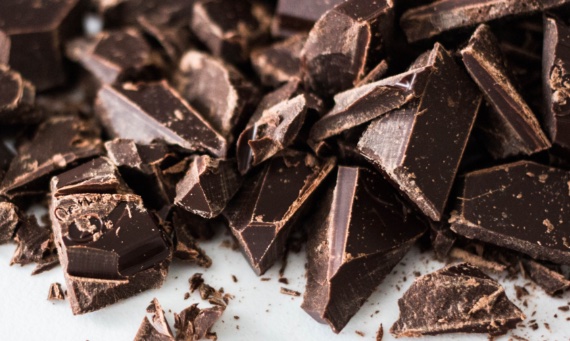Berries that can protect us from cancer, fruits that prevent cardiovascular diseases or seeds that fight depression. The properties and supposed benefits of what are popularly known as “superfoods” are such that from time to time we hear about some new food, often from an exotic country, which can help us shed weight without exercise, reduce our cholesterol levels or obtain some other almost miraculous benefit.
But how much truth is there in these claims? To begin with, it should be made clear, in the words of New York University nutrition professor Marion Nestle, that the label “superfood” is a “advertising concept”, a “nutritionally meaningless term.” It is not used in nutritional science or scientific studies, and should be taken for what it is: a marketing ploy. For this reason, in 2007 the European Union banned the use of the term superfood on packaging, unless it refers to a specific property that is substantiated by quality scientific studies. In the US, there is no specific regulation, so the term can be used freely. We review some of the most popular and famous “superfoods” on this list.
Quinoa
Quinoa (Chenopodium quinoa) is one of the great trendy foods, thanks to its promotion by some popular celebrities. This gluten-free pseudo-cereal of Andean origin, rich in protein, fibre, vitamins, folate, minerals and essential amino acids, has become widespread as a food recommended for lowering cholesterol and aiding weight loss. The seeds are usually cooked and the saponin coating, a bitter compound with potential toxicity, is removed prior to sale. The nutritional value of quinoa is well recognised, and there is evidence to support its benefits in fat metabolism. Some studies also suggest improvements in lowering cardiovascular risk.

However, as explained by Julio Basulto, dietician and nutritionist, author of six books on diets and healthy foods, “quinoa is a healthy food, but not a healing one.” “It has the properties of whole grains, so it is much healthier to eat quinoa for breakfast than white bread, but from there to saying it has therapeutic properties, that’s a big stretch.” So, although quinoa doesn’t have miraculous properties in itself, it is very healthy as a wholegrain seed. “The consumption of whole grains has been to shown to have a long-term effect on reducing mortality rates,” says the expert. Nevertheless, the cardiovascular benefits of whole grains have not found unanimous support in scientific studies.
Goji berries
The popularity of the fruit of certain Asian plants of the Lycium genus—which do not originate in the Himalayas, as is sometimes believed, but from northern China—comes from traditional Chinese medicine, which attributes to them the ability to stimulate the libido, strengthen the immune system and protect against cancer and cardiovascular diseases. All these alleged qualities have made these berries a highly sought-after food in the West, where their price has skyrocketed.

However, although some studies have found possible benefits of the fruit, its extracts or its polysaccharides, others have provided inconsistent or contradictory results, and it is therefore considered that the supposed qualities of these berries have yet to be confirmed, if they exist at all.
According to Basulto, and as in the case of quinoa, goji berries can be considered as a healthy food, but without therapeutic capacities: “It is a dried fruit, from which the water has been extracted and, therefore, it has gained in nutrients. So, in general, it has properties that are good for health, but not curative.”
Blueberries
Blueberries are recommended as a superfood for their ability to reduce the risk of cardiovascular disease, an effect that has been validated by some studies that have found a link between blueberry consumption and a reduced risk of myocardial infarction. Reviews of the available clinical data suggest that consumption of blueberries may be beneficial for people with hypertension and can improve some parameters of cardiovascular risk, but the evidence is considered to be inconsistent.

These potential benefits are attributed to compounds called anthocyanins, a type of flavonoid. These are dark pigments found in high levels in blueberries, strawberries, raspberries and other red fruits, which have antioxidant action in vitro. However, only a very small proportion of these compounds enter the bloodstream, according to Gordon McDougall of the James Hutton Institute for Scientific Research. It is therefore not known whether anthocyanins actually have an antioxidant effect in the body. According to the European Food Safety Authority, there is no evidence of a beneficial action in this respect, nor is there evidence that anthocyanin-rich foods have anti-ageing or anti-cancer properties.
Chia seeds
Chia (Salvia hispanica) is a plant of Mexican origin whose seeds have been consumed since ancient times by the peoples of Mesoamerica. In recent years, it has become widespread as a novelty food because of its nutritional content, which includes omega-3 unsaturated fatty acids, which suggests possible cardiovascular and even anti-depression benefits.
Chia seeds contain 17 grams of omega-3s per 100 grams, a much higher proportion than salmon, which provides 2.2 grams. However, several factors come into play: these seeds are a food supplement, so 100 grams are rarely eaten, and the type of fatty acids they contain must be converted in the human body to another form, a process that is inefficient in humans.

It should be noted that, although omega-3s are essential for proper metabolism and can only be obtained from the diet, a healthy, balanced diet should provide the necessary quantities. Despite the popularity of omega-3 supplements, there is no conclusive data on the cardiovascular benefits of omega-3 supplementation. Recent reviews of a multitude of clinical trials have shown little or no effect. Added to this are the still uncertain benefits of chia itself. For all these reasons, says Basulto: “I find no reason to recommend them. Whole, they are not digested well and practically none of their components are usually used; and when crushed they do not provide anything that we cannot obtain from other cheaper and tastier foods, such as hazelnuts or walnuts.”
Bitter chocolate
The potential benefit of chocolate is related to flavonoids, compounds found in cocoa that have antioxidant action and purported cardiovascular benefits. However, as with blueberry anthocyanins, flavonoids are poorly absorbed in the human body and their antioxidant effect on the body is considered negligible. The potential benefits of these compounds are considered unproven.

“Chocolate consumption has not been shown in any quality study to be of great benefit. On the other hand, its high energy density and the fact that it is a cariogenic food have been demonstrated,” Basulto explains. Thus, in addition to its tendency to cause tooth decay, chocolate contains large amounts of sugar and fat, in a population with growing obesity problems.
Kale
Kale is perhaps one of the latest additions to the popular lists of superfoods. This vegetable, native to the eastern Mediterranean and the Anatolian peninsula, belongs to the same species (Brassica oleracea) as cabbage, cauliflower, broccoli and Brussels sprouts—in other words, kale is a type of cabbage. However, its novelty, celebrity blogs and some Michelin-starred restaurants turned it into a trendy food years ago, replacing other vegetables: Bon Appétit magazine declared 2012 the year of kale, and on 2 October 2013 National Kale Day was launched in the USA. However, despite the years that have passed since the kale craze was born, it has not been proven to have superior benefits to other varieties of cabbage, all of which are considered healthy foods. A review of the available scientific evidence found that the nutritional composition of kale is similar to that of other cabbages. “Cruciferous vegetables can provide variety of compounds with health benefits, but it is hard to conclude at that point that one cruciferous is healthier than another,” the authors write, adding that “it remains unclear why kale is declared superior in comparison with other cruciferous vegetables.” The authors suggest that this may not be due to its actual properties, but to “some other factors.”

A fad without scientific backing
It is clear from the above that the main problem with these foods is the difficulty of controlling the effect that their components have on the human body. While it is possible to analyse how they act separately, when they are part of the diet of a real human being there are many confounding variables that make it impossible to draw clear conclusions. This is one of the reasons why, when scientific studies look at the alleged superpowers of these foods, the evidence is often weak.
Thus, although celebrities, media hype and miracle diet fads have helped to popularise the benefits of superfoods, they still lack solid scientific backing beyond their general qualities as healthy versus unhealthy foods. But in contrast to these trendy foods, there are often others with similar nutrient compositions that are not as well publicised, perhaps because they are not as novel; for example, cranberries or strawberries versus blueberries, wholegrain cereals versus quinoa, walnuts versus chia, or Brussels sprouts versus kale.
One of the added problems, warn some experts, is that reliance on these foods, often considered miraculous, can lead to neglect of lifestyle. “You may think: I don’t need to do sports, or I don’t need to drink less alcohol, because I already eat quinoa, blueberries, chia seeds or any other superfood. This is a big and dangerous mistake,” warns Basulto.
Comments on this publication